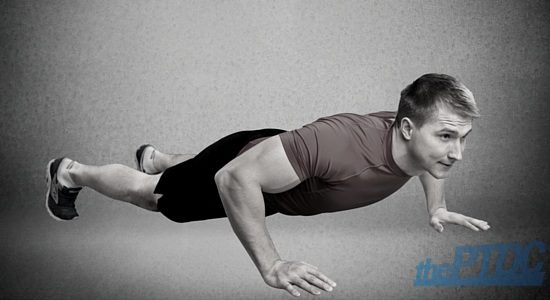Starting out as a trainer in the fitness world is difficult.
Personal training is a career that requires you to wear multiple hats; sales person, project manager, and marketer. You're also in charge of creating, organizing, and delivering all of the different programming you might offer.
It's a lot of work, but one thing that rarely gets mentioned is your quality of service and communication, where you don't use words at all. In other words, it's not so much what you say, but how you "say" it.
Often it's the little things that make a big difference.
Everyone is highly attuned to body language.
When trainers are on their phones, avoiding eye contact, and generally showing an utter lack of respect for the people that are writing them their paycheck, they are doing themselves and clients a huge disservice.
They are telling their clients that they don't care.
When we work with people, we should take pride in our appearance, attitude, and the level of service we provide, including how we use our body language to convey these things. Try using these non-verbal methods to ensure that you're providing the best experience you possibly can for your client.
1. Make eye contact regularly.

Some trainers struggle with this due to their personality, confidence, and knowledge base. However, there are critical times on the floor when eye contact can help drive home a point, or show you're listening and are engaged with the appointment.
This makes the client feel more confident in your ability, not only as a trainer but as another human being who can empathize. There's no need for a staring contest, but you at least need to be attentive to your client's needs.
If you're explaining a movement but aren't constantly drawing the attention of the person by looking them in the eyes, something in your actual words may be lost.
2. Don't just talk about it, be about it.
Once you've explained a movement and why it's awesome for your clients, don't just expect them to get it immediately. Show them how to do it! This seems obvious, but you have to cater your demonstrations to individual clients as well.
People learn differently. Some people need the description of the goal of the movement, while others may need to watch you complete it. Make sure you show and tell (or in this case, talk first, then show).
Besides, if you can't show them in a confident way, then why are you even programming it?
3. Don't just look at things from one angle.
It's important to assess your client's movements from different angles and make a show of it by standing from varying distances. It will help you get the big picture, as well as address alignment, postural, or other issues. As Eric Cressey says, "Coach at the 90s," referring to angles. So, use all of those angles!

Aside from getting the movement right, it helps to show your client that you're completely focused. Certainly, there are situations when you may need to be stationary (i.e. spotting or assisting with exercise), but make sure you aren't just standing there like a statue or looking bored.
4. Where your client goes, you go.
This represents the concept of "mirroring" that Jonathan Goodman talks about. Basically, it's all about respecting your client. I never want to make my client feel like I'm talking down to them, asserting dominance, or that we're not a team. To have the effective level of communication, you need to be at eye level.
For example, if they're foam rolling, drop to one knee, or foam roll with them. Don't stand over them, so they have to crank their C-Spine to look up at you the whole time.
Stay on their level. This naturally just makes it easier and more relaxing to talk to you.
5. Keep your hands active.
Your hands can help convey the message you want to get across. If you watch great speakers, they use their hands to emphasize certain points and frame different concepts. It's the same when you're coaching someone. You want to engage them and usher them towards a goal.
That also means you shouldn't do things like putting your hands inside your pockets or crossing your arms. Just like your body, your hands should be moving. Point to a spot that you want them to feel. Put them in the correct position yourself. Grab their attention when explaining new exercises.
Of course, be sure to ask your client is okay with physical contact as well.

For example, many people struggle with position and activation of the lats during pulling exercises. But you'd be surprised by how much a simple touch to the muscle will help them feel the movement.
You don't need to go over the top and figure out if they're ticklish, but it's another way to help them get that kinesthetic feedback they might need.
6. Don't sit down.
Above all else, your client may be busting their biscuits. The moment that you want to take a break and sit on a bench is the moment that you tell them you think it's okay to slack off. What kind of message is that to your client?
An ineffective one for achieving results, as well as retaining clients.
Listen, I get that we as trainers get tired. We get hungry. We get complacent. But this is what you signed up for. If you have trouble managing your schedule to the point that you can't handle working those long days, that's another issue entirely.
Bottom-line: People pay you for your service. Deliver it with consistency.
7. Avoid phone use.
Sometimes using your phone happens out of habit, but save checking your phone for emoji-laced text messages and Facebook likes for after your client's session. If this habit is too tough to change, leave your phone elsewhere.
Your undivided attention is what the client needs, not you "loling" at a GIF your friend sent you.
But what if you use your phone to access online formats of programming, such as Google Drive or Evernote? That's perfectly acceptable, but be upfront with your client about it.

Even if you are reading a program from your phone, you need to balance between interacting and coaching the client. They'll appreciate your full attention when they are absolutely dominating their deadlift.
8. Think outside of your immediate session.
Aside from the fitness related things we as trainers do on a daily basis, there are many ways to show your clients that you care about them. Be more than a trainer who simply counts reps and yells at people. Bring an experience like no other with a few of these examples:
- Smile!
- Help them wipe down their equipment.
- Grab them a towel before the session.
- Un-rack and load weights with them.
- Order them a smoothie so it's ready and they can grab it on their way out.
- Give out holiday cards.
- Send them an article that would be useful to them.
- ...anything that screams "I appreciate you!"
Go out of your way to make the easy things easier for them, so they can focus on the important stuff: working hard and reaching their goals.
Overall, this stuff isn't revolutionary. Yet you'd be amazed by how much of a difference they make when you actually do these with your clients.
Approach each session with integrity and respect for the person you are helping, and you'll have higher retention and more impressive results.
Other trainers found these articles helpful
- 15 Ways to Maximize Personal Trainer Client Retention By Jonathan Goodman
- 8 Coaching Techniques You Should Use to Help Your Clients Succeed By Travis Pollen
- 7 Quick Tips to Build Great Relationships With Clients By Jesse Jackson









